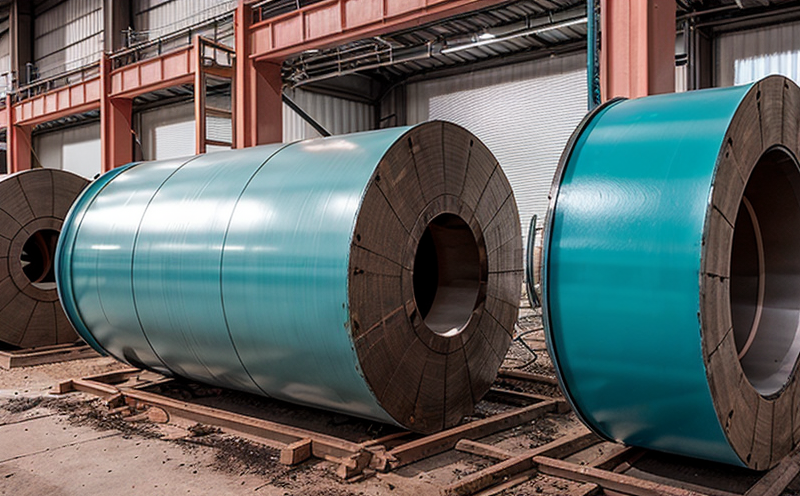ASTM G109 Concrete Reinforcement Corrosion Testing
The ASTM G109 standard provides a method for evaluating the effectiveness of protective coatings on concrete reinforcement. This testing is essential in ensuring the durability and longevity of structures that rely heavily on reinforced concrete, such as bridges, buildings, and infrastructure.
Concrete reinforcement corrosion is a significant issue in industrial manufacturing and processing facilities where harsh environments can accelerate degradation. By using ASTM G109, manufacturers can ensure their protective coatings provide adequate corrosion resistance under the most challenging conditions. The testing process involves exposing coated specimens to simulated environmental stressors that mimic real-world conditions, allowing for an accurate assessment of coating performance.
The procedure outlined in ASTM G109 is comprehensive and includes several key steps: sample preparation, application of protective coatings, exposure to corrosive environments, visual inspection, and the collection of data on coating integrity. This method ensures that only reliable coatings are used, thereby enhancing the structural integrity of facilities.
One of the primary advantages of ASTM G109 is its ability to predict long-term performance in the field. By simulating real-world conditions, this testing allows for the identification of potential issues early on, ensuring that substandard materials do not reach end-users. This proactive approach helps to minimize costly repairs and downtime associated with premature failure.
The ASTM G109 method is widely recognized and accepted by regulatory bodies and industry standards organizations around the world. Its international acceptance ensures compatibility across borders and provides a consistent benchmark for quality control in concrete reinforcement corrosion testing.
Benefits
The benefits of ASTM G109 Concrete Reinforcement Corrosion Testing are numerous, particularly for industrial manufacturing and processing facilities. Here are some key advantages:
- Predictive Performance: The testing method allows for the prediction of long-term performance in real-world conditions.
- Enhanced Durability: By selecting coatings that pass ASTM G109, manufacturers can ensure their facilities have a longer lifespan.
- Cost Efficiency: Early identification of substandard materials prevents costly repairs and downtime associated with premature failure.
- Regulatory Compliance: The method is widely recognized by regulatory bodies, ensuring compliance with industry standards.
International Acceptance and Recognition
The ASTM G109 standard for concrete reinforcement corrosion testing enjoys widespread international acceptance. This recognition stems from its reliability and consistency across various environments, making it a preferred choice for quality assurance in the construction industry.
Regulatory bodies worldwide have adopted ASTM G109 as part of their standards for evaluating protective coatings on concrete reinforcement. The method’s global recognition ensures that results are consistent and comparable, facilitating international collaboration and trade.
The standard is often referenced in international agreements and treaties related to construction materials and quality assurance. This widespread acceptance underscores its importance in the global market.
Use Cases and Application Examples
| Use Case | Description |
|---|---|
| Bridges | ASTM G109 is critical for evaluating the durability of concrete reinforcement in bridge structures exposed to saltwater and industrial pollutants. |
| Tunnels | The testing ensures that concrete reinforcements can withstand the corrosive effects of water seepage and chemicals used in tunnel maintenance. |
| Factories | In industrial settings, ASTM G109 helps ensure that protective coatings on concrete reinforcement are resilient to acidic emissions from manufacturing processes. |
| Buildings | The method is essential for assessing the longevity of reinforced concrete in high-rise buildings exposed to environmental elements and pollutants. |
| Application Example | Description |
|---|---|
| Airports | In airport infrastructure, ASTM G109 is used to evaluate the durability of concrete reinforcement under extreme weather conditions and de-icing chemicals. |
| Hospitals | The testing ensures that concrete reinforcements in hospital buildings are resistant to corrosive materials like cleaning agents and medical waste. |
| Power Plants | In industrial plants, ASTM G109 helps assess the effectiveness of protective coatings on concrete reinforcement against acidic emissions from power generation processes. |





